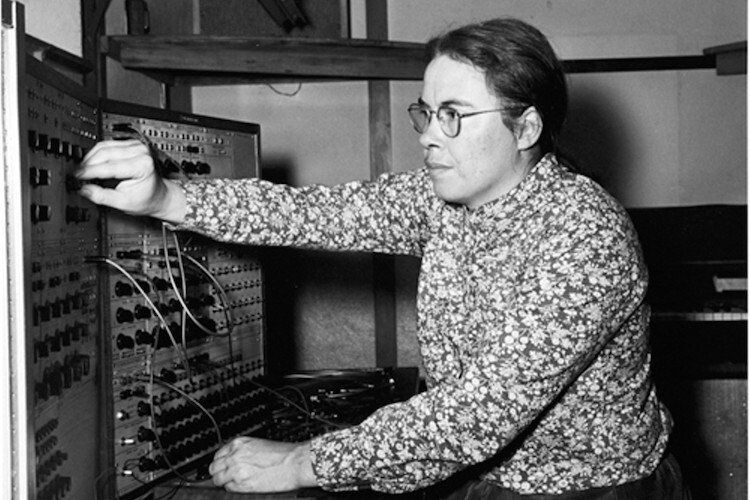Pauline Oliveros

Pauline Oliveros (May 30, 1932 – November 24, 2016) was an American composer, accordionist and a central figure in the development of post-war experimental and electronic music.
She was a founding member of the San Francisco Tape Music Centre in the 1960s, and served as its director. She taught music at Mills College, the University of California, San Diego (UCSD), Oberlin Conservatory of Music, and Rensselaer Polytechnic Institute. Oliveros authored books, formulated new music theories, and investigated new ways to focus attention on music including her concepts of "deep listening" and "sonic awareness". She was an Eyebeam resident.
When Oliveros turned 21, she obtained her first tape recording deck, which led to her creating her own pieces and future projects in this field. Oliveros was one of the original members of the San Francisco Tape Music Centre, which was an important resource for electronic music on the U.S. West Coast during the 1960s. The Centre later moved to Mills College, with Oliveros serving as its first director; it was renamed the Centre for Contemporary Music. Oliveros often improvised with the Expanded Instrument System, an electronic signal processing system she designed, in her performances and recordings. Oliveros held Honorary Doctorates in Music from the University of Maryland Baltimore County, Mills College, Oakland, California; and DeMontfor University, Leicester, U.K.
In 1988, as a result of descending 14 feet into the Dan Harpole underground cistern in Port Townsend, Washington, to make a recording, Oliveros coined the term "deep listening"—a pun that has blossomed into "an aesthetic based upon principles of improvisation, electronic music, ritual, teaching and meditation. This aesthetic is designed to inspire both trained and untrained performers to practice the art of listening and responding to environmental conditions in solo and ensemble situations". Dempster, Oliveros and Panaiotis then formed the Deep Listening Band, and deep listening became a program of the Pauline Oliveros Foundation, founded in 1985. The Deep Listening program includes annual listening retreats in Europe, New Mexico and in upstate New York, as well as apprenticeship and certification programs. The Pauline Oliveros Foundation changed its name to Deep Listening Institute, Ltd., in 2005. The Deep Listening Band, which included Oliveros, David Gamper (1947–2011) and Stuart Dempster, specializes in performing and recording in resonant or reverberant spaces such as caves, cathedrals and huge underground cisterns. They have collaborated with Ellen Fullman and her long-string instrument, as well as countless other musicians, dancers and performers. The Centre for Deep Listening at Rensselaer (CDL@RPI), initially under the direction of Tomie Hahn, is now established and is the steward of the former Deep Listening Institute. A celebratory concert was held on March 11, 2015, at the Experimental Media and Performing Arts Centre (EMPAC) at the Rensselaer Polytechnic Institute in Troy, New York. Stephanie Loveless is the current director of the CDL@RPI.
Heidi Von Gunden names a new musical theory developed by Oliveros, "sonic awareness", and describes it as "the ability to consciously focus attention upon environmental and musical sound", requiring "continual alertness and an inclination to be always listening" and which she describes as comparable to John Berger's concept of visual consciousness (as in his Ways of Seeing) Oliveros discusses this theory in the "Introductions" to her Sonic Meditations and in articles. Von Gunden describes sonic awareness as "a synthesis of the psychology of consciousness, the physiology of the martial arts, and the sociology of the feminist movement", and describes two ways of processing information, "attention and awareness", or focal attention and global attention, which may be represented by a dot and circle, respectively, a symbol Oliveros commonly employs in compositions such as Rose Moon (1977) and El Rilicario de los Animales (1979). (The titles of Oliveros' pieces Rose Moon and Rose Mountain refer to her romantic partner Linda Montano having gone by Rose Mountain at one time.) Later this representation was expanded, with the symbol quartered and the quarters representing "actively making sound", "actually imagining sound", "listening to present sound" and "remembering past sound", with this model used in Sonic Meditations. Practice of the theory creates "complex sound masses possessing a strong tonal centre". Wikipedia
